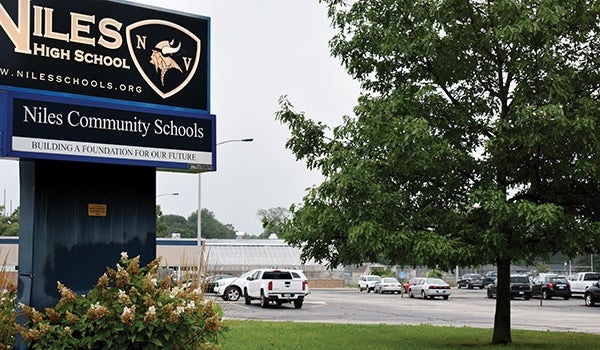Schools make move to healthier choices
Published 9:05 am Thursday, June 26, 2014
Law requires all food sold meet dietary guidelines
In recent years, public schools in the United States have been encouraged — and mandated, in some cases — to fight the fight against childhood obesity.
Local students may have noticed changes to the lunch menu or an increase in physical fitness as federal legislation endorsed by First Lady Michelle Obama has put a limit on calorie consumption during school hours.
“I think definitely childhood obesity is an issue,” said Brandywine Community Schools superintendent John Jarpe. “Maybe we can even attribute that to the electronic generation. Maybe (students) don’t get outside as much as they used to. Perhaps that wasn’t an issue in past years because kids didn’t need as much healthy food because they were able to get more exercise.”
Jarpe said students at Brandywine elementary schools have transitioned from having gym class once a week to having it twice a week.
“Maybe that’s not even enough. But we also have recess twice a day,” Jarpe said.
Costs
Kathy Holy, Director of Finance at Brandywine, said the school also made changes to its menu options in December 2010 when the Healthy Hunger-Free Kids Act was passed.
“You don’t see the French fries or a lot of the foods you used to,” Holy said. “There’s a push toward more vegetables and healthier options.”
Holy said the food service department is evaluated annually to ensure the menu they are serving students meets state standards.
“Of course healthy food is more expensive, so food costs have gone up,” Holy said.
At a meeting Monday night, the Brandywine School Board approved a 10-cent increase in meal costs for the third year in a row. Elementary lunch cost increased from $2.35 to $2.45, and high school lunch increased from $2.55 to $2.65.
“It has to do with the equity in school lunch and the Healthy Hunger-Free Kids Act,” Holy said, adding that the state government is attempting to close the gap between what the federal government is paying for free and reduced meals and the price students pay for lunches.
“They want the full-pay students closer to the federal pay,” she said. “It’s a requirement from the Department of Agriculture’s guidelines. They do cap it. You don’t have to raise it any more than 10 cents.”
Regulations
Since its implementation in 2010, the Healthy Hunger-Free Kids Act has acquired a number of changes, including the most recent amendment, the USDA Smart Snacks in School guidelines, which go into effect July 1.
The most recent guidelines state that entrée items must be greater than or equal to 350 calories. Snack and side items must not exceed 200 calories. All food items are also under strict sodium, fat and sugar limits.
Previously, legislation only applied to food served by school kitchens.
“You can’t have the soda machines or anything like that available for students during the lunch hours,” Jarpe said. “You can’t have bake sales or candy bar sales during lunch hours, things of that nature. The intent is that the students are getting the healthiest kind of foods at lunch and there’s no competition.”





